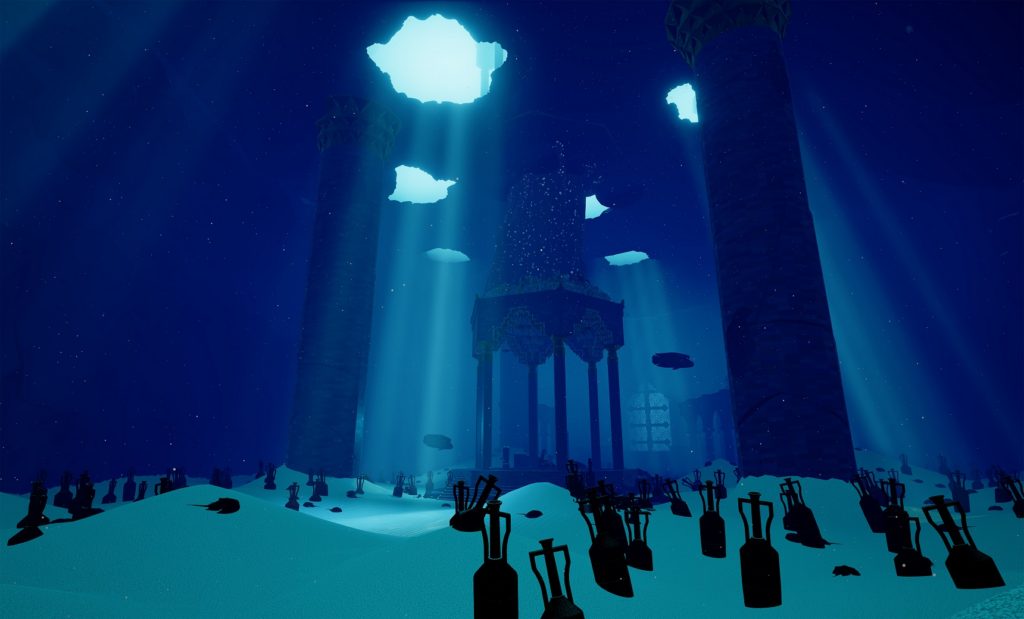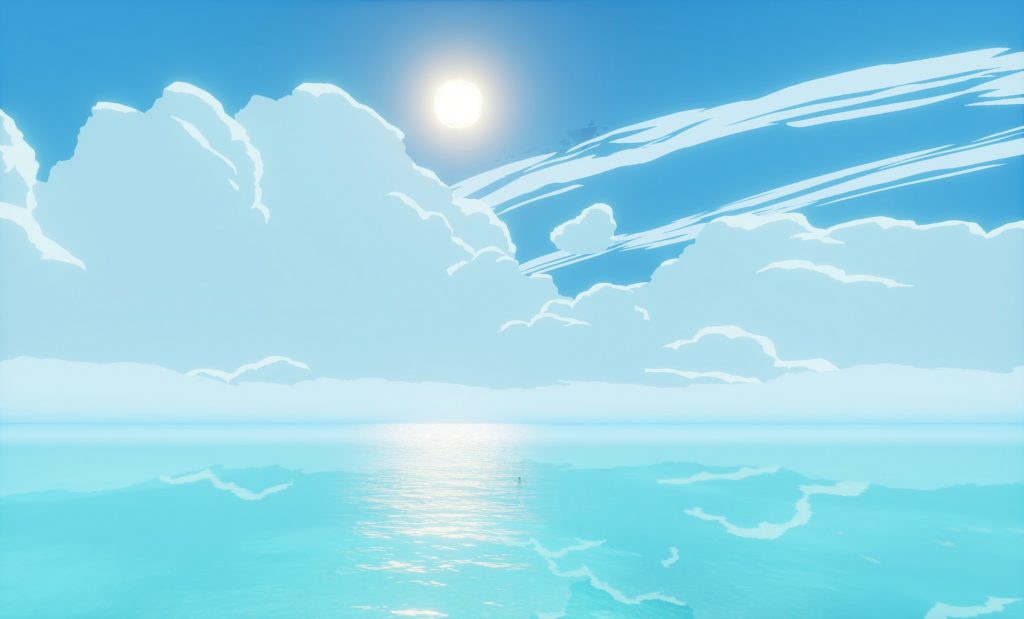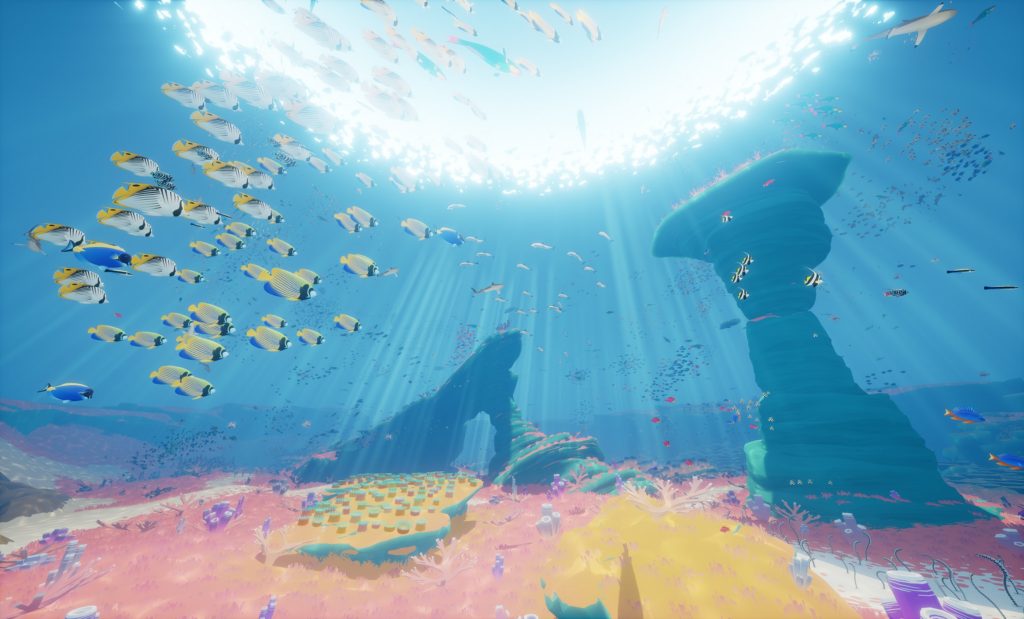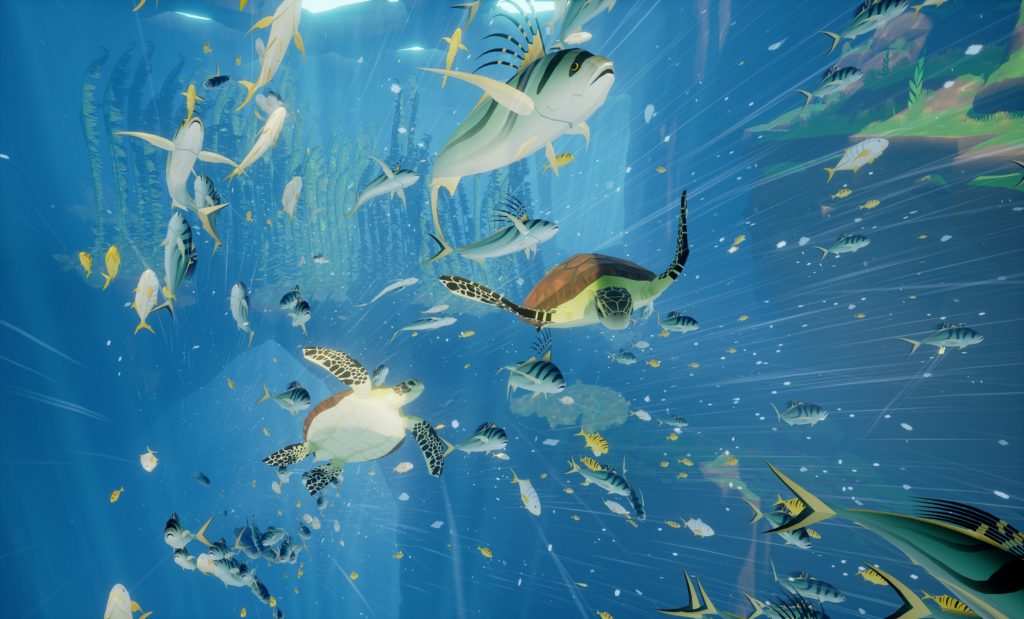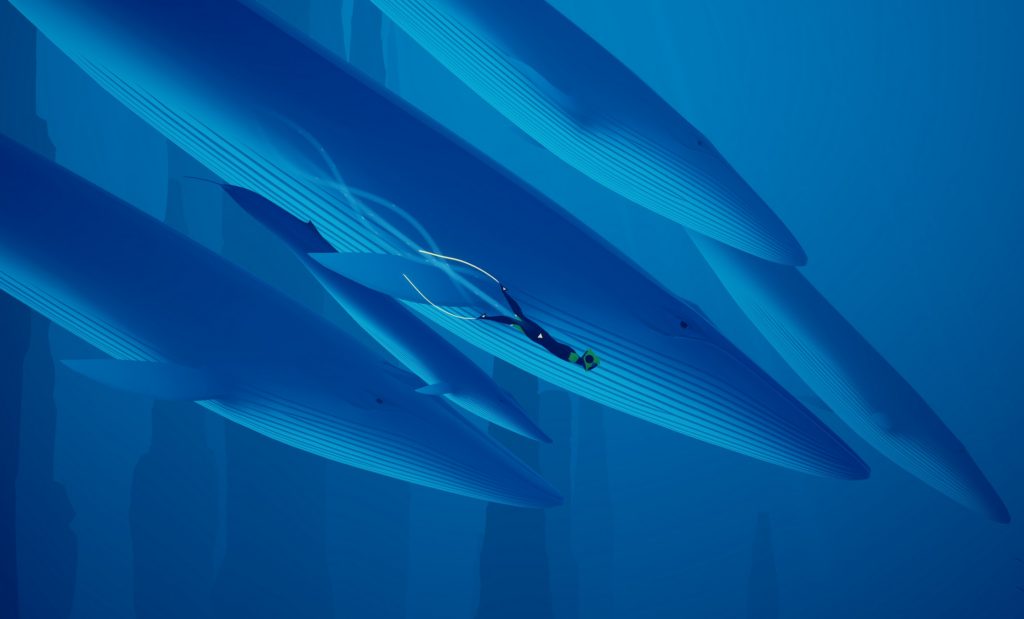The “dream” of scuba diving is separated by the actual, body-in-water act by one significant detail: there is no equipment. To scuba dive, you must submerge with a wetsuit, mask, flippers, then there’s the air cylinder, compass, line cutter, and dive light. There’s more too and it all bears down upon you; a heavy baggage of artificial stand-ins for fish parts and safety measures that account for inevitable human error. Matt Nava wants away with it all. He wants to swim nakedly under the sea—bold and free. Drowning not included.
Nava has been scuba diving since high school. He described it as “super fun, transformative” and “the best thing [he] ever did.” He didn’t hesitate to say that it changed his life in an instant. The appeal of scuba diving, at least for Nava, is that it lets you enter “this other world”—he put huge spaces between those three words when he said them, as if each one was a slow, steady step on the moon. And, unlike the planets that orbit the Sun, the ocean is populated with life to interact with, to tease out, to slap fingers against fins in cross-species acknowledgement of the radical capacity of the deep blue. There’s a lot of shit going on below the waterline—we want in.
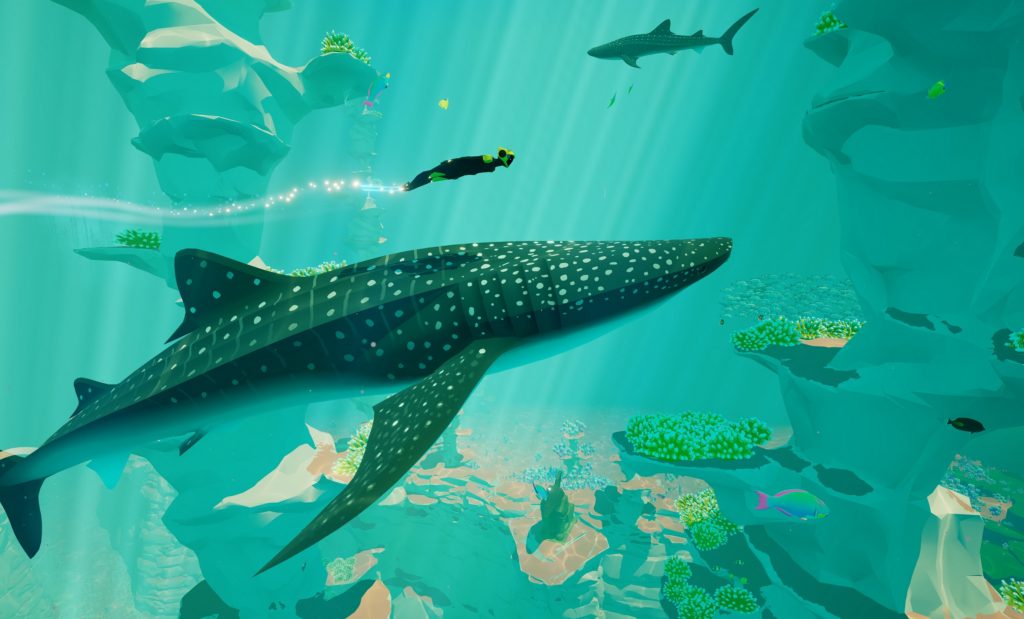
Abzû has been Nava’s project to realize his scuba diving dream for the past three years. He started it by himself after the team he worked with at thatgamecompany on Journey (2012) disbanded. Journey was his second videogame project, for which he was art director, the first being the studio’s 2009 petal-in-the-wind game, Flower. Everything that Nava has learned about games came from his experience at thatgamecompany. If you look at the opening desert scenes in Journey you’ll notice that the sky there isn’t blue as you’d expect, but a very odd shade of green. This is Nava’s doing. He had built a sequence of gradient colors that would guide the hues and tones of the game’s progression. This sequence placed light blue—the blue you’d use for the sky—right at the end, the idea being that this refreshing color was a visual reward for the player who had reached the game’s finale. And so while a green sky makes no real-world sense, it fitted Nava’s vision, and so it was.
The green sky was born of one of the prominent ideas Nava carried over to his new studio, Giant Squid: drawing representational curves for the levels or locations of a game before even making a 3D model. These curves represent scales of tension and subtlety, and they guide everything from the speed of movement to the dominant colors in a space. The higher the point of a curve the more intense the scene, with the dips representing an effort towards calmer, more meditative sequences. “We have those at all different scales in the game… throughout this entire level there’s a curve, but then in each room we have a curve, and over the entire course of the game there’s this really big curve,” Nava said.
He said this just after one of the enforcers of this curve showed up: a great white shark. The E3 demo of Abzû opens up with the most serene waters to ever grace an electronic screen. You swim with schools of fish in a sparse blue expanse, then move to a dingier green area where underwater weeds waggle like tapestry in the wind, where sea turtles can be gripped by the shell for a ride, and where a drone can be revived to follow you around with a handy flashlight that illuminates the darker caves. And it is all guided by Nava’s abstract vision of scuba diving, meaning that, unlike a diving simulator, there is no air gauge to think about, and you’re absolutely acrobatic and agile in the water. One of the stand-out movements available to the game’s swimmer is being able to jump out of the water in an arc, just for a moment, traversing the two worlds of liquid and air—the dolphins can’t help but join in. Then the distinct silhouette appears; cut with a knife, gun-metal grey, a weapon in the water. The great white is here. The curve shoots upwards.
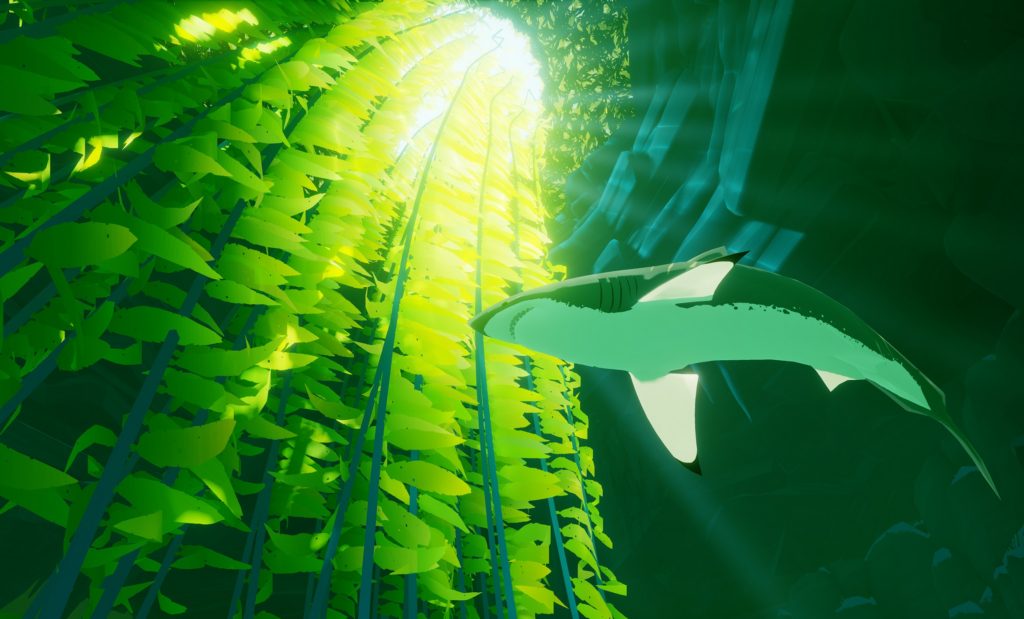
Since at least Steven Spielberg’s Jaws (1975), the great white has been an easy motif for danger in the water. Perhaps it’s a little too easy. It’s why Nava wants to challenge that preconception… slightly. “The great white shark is this, you know, very iconic fish that we all know and fear,” he said. “In Abzû, we saw this opportunity to show more sides to the great white shark, represent it more as this powerful beast that you have to respect.” Hence the shark won’t immediately attack you—in fact, you cannot die in Abzû—but you should show an appreciation for its place in the game’s ecosystem. It is the dominant predator after all. And it is truly an ecosystem that Abzû has for you to interact with. While scuba diving has been abstracted into a dream, the fish in the game and how they group together, even how they swim, hits simulation levels of mimicry.
Every single fish belongs to a biome that represents its real-world habitat around the globe. The demo area is based on the kelp forests off the coast of California, and so you can watch as a goliath grouper fish eats the smaller fish, a bat ray moving like a graceful dancer in the background. There’s even a “meditation mode” that’s activated by sitting on certain statues, from where you can put the controller down and watch the fish swim by as it if were a virtual aquarium, the names and species of fish popping up for you to get familiar. The knowledge you pick up here can be used outside of the game. That’s why Nava and team went so far as to put a working simulation of the food chain in Abzû—it’s a topic that gets Nava particularly giddy. “You see these other games with fish but you never see them eating each other. And it’s like, that is what fish do … you need to have that,” he said. “So we’re really excited to have that in the game. Sometimes, if you’re riding a smaller predator, they can be eaten right out from under you, which is awesome.”
Besides fish facts, there’s another reason to drift into the darker recesses with your drone. This is where the secrets can be found. As Nava showed on-screen, you can happen across places where the kelp has decayed, where there is no light, and by interacting with the strange architecture to be found within, you can briefly enter a more magical water world. “The ocean is this place that, you know, is very unexplored, and I think that we all have in our imaginations, like, this sense of mystery about it, and we wanted to include that kind of surreal magic that you think about, like, ‘what’s down there?’, in the game,” Nava said. As he did, the diver and their drone returned and brought with them 10,000 fish that suddenly filled the entire “room” (as Nava calls it).
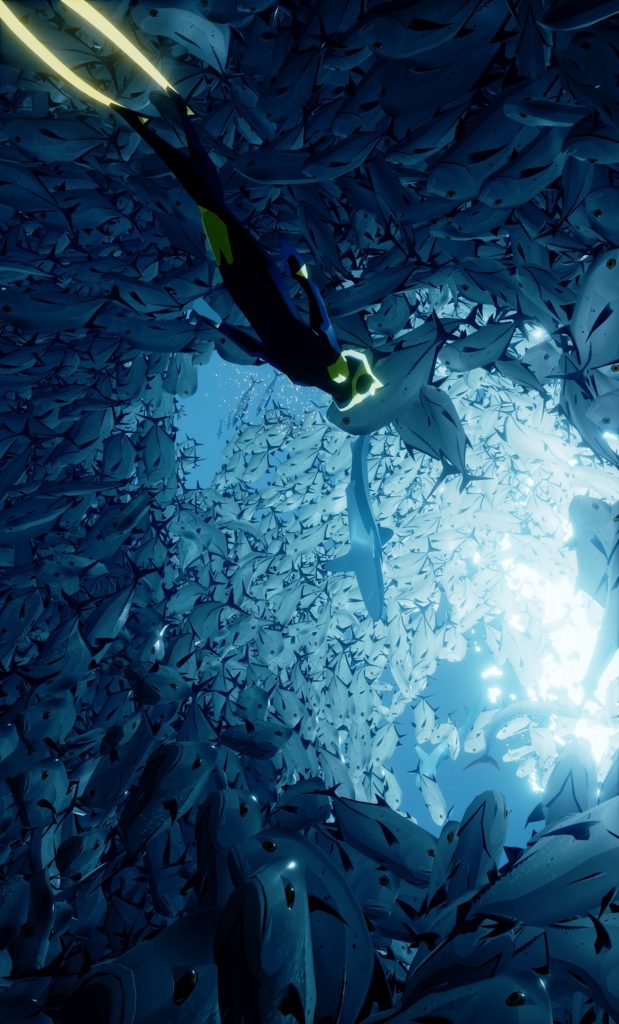
And that number is no exaggeration. As Nava explained, one of the team’s engineers had to rethink how they animate characters to achieve this many fish on-screen at once. “If we had gone with the traditional method of creating an underlying skeleton that deforms the character, you can only have 100 fish on the screen,” Nava said. “And then one of our engineers figured out that, hey, if you take away that internal skeleton you can still animate them with, like, mathematical formulas. And doing it that way is much cheaper and we can have thousands of fish.” This meant that, in one night, Abzû‘s ocean populace suddenly became one hundred times its previous size—”that was a good night,” said Nava. “It was fantastic.”
The Abzû demo comes to a close by teasing what else is to come as you gradually descend the ocean depths. First, there are glyphs to find that uncover a culture that has been lost, which Nava said also begins to make connections to how the swimmer you play relates to the history of this world. Then there’s a giant mechanical structure, completely out of place among the weeds and coral, that grants you entry to the next biome. Each progression creeps closer to an abyss, one that’s forecast through an increasing murkiness in the water, gradually blocking out the light from above. This encroaching blackness enacts the game’s biggest curve, ramping up the tension. “We’ve had playtesters who have been freaked out by just being in these dark environments,” Nava said. “It’s really cool to be able to manipulate the player’s sense of space and use that to create these kind of stories.” But it’s not the gloom alone that carries this sense of foreboding because, as Nava teased, there are larger creatures to be found below.
“What is your favorite fish?” we asked.
“Oh man, there are hundreds of them,” he replied. “It’s hard to choose, but some of the larger creatures are really majestic.”
“Is there a giant squid [in the game]?”
“I don’t wanna spoil it but we definitely do have cephalopods in the game, so … you can take a wild guess.”
Abzû is due to come out for PlayStation 4 and PC on August 2nd.
This article was based on an interview with Matt Nava conducted by Clayton Purdom.
